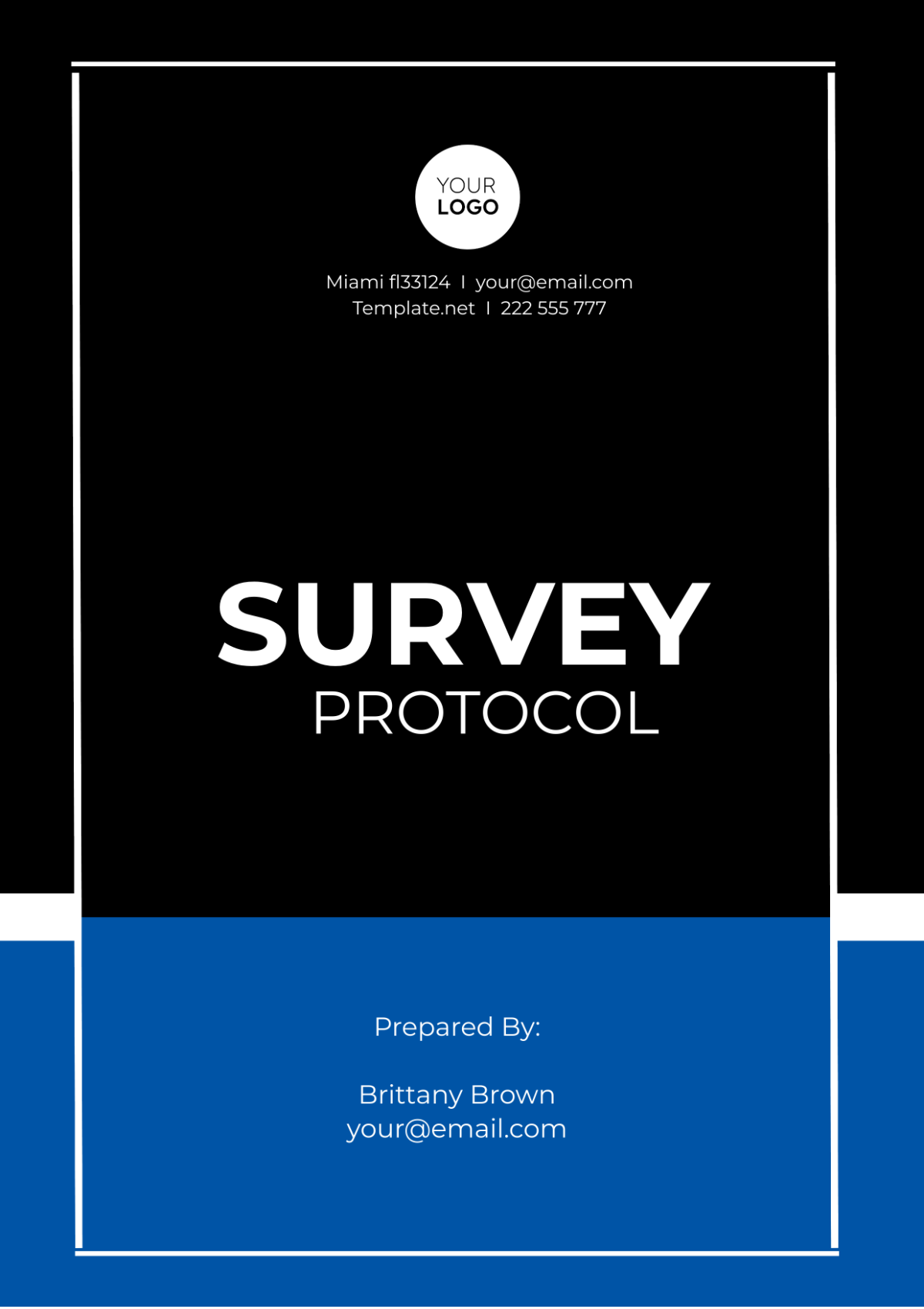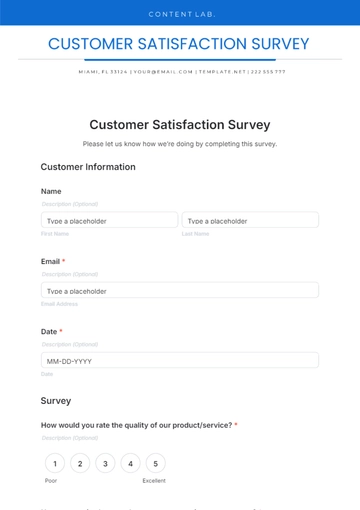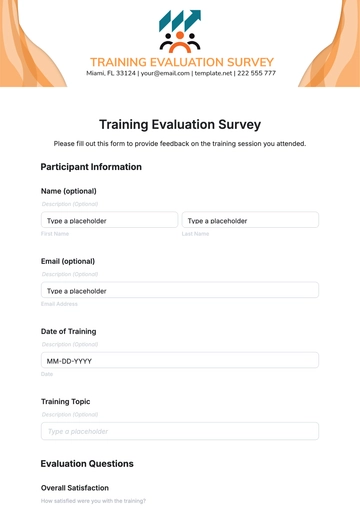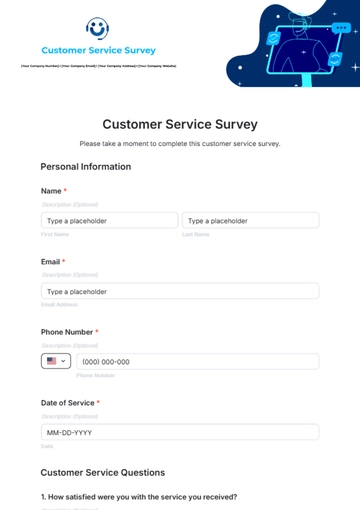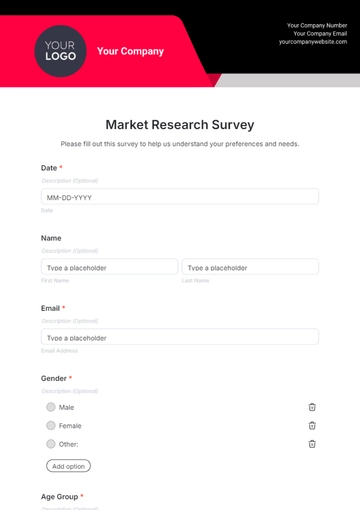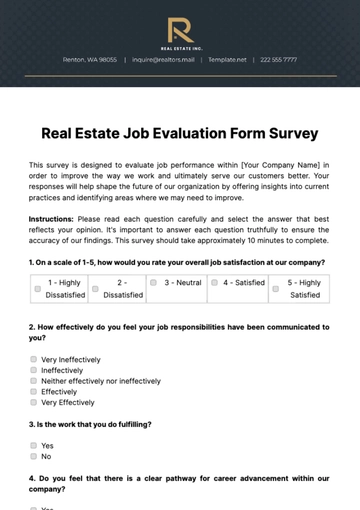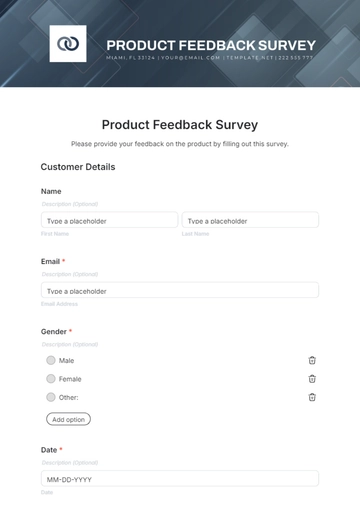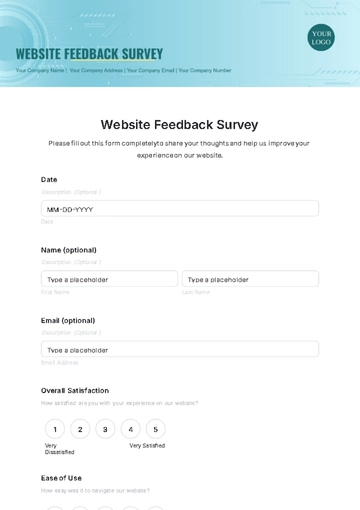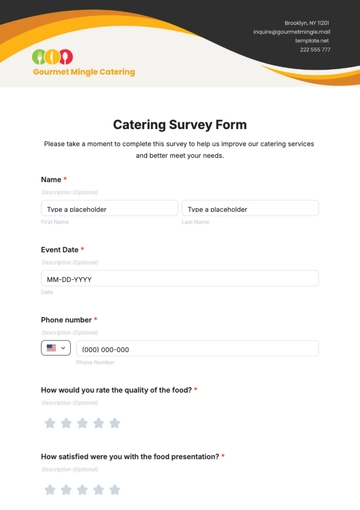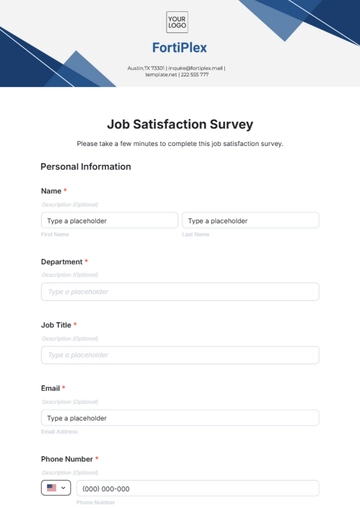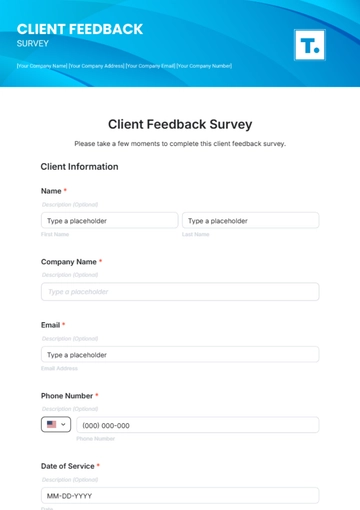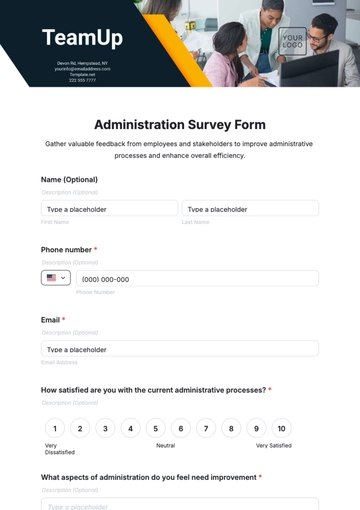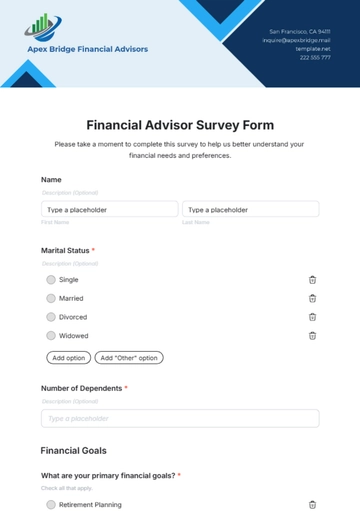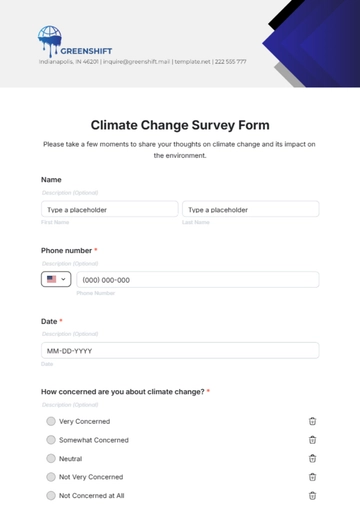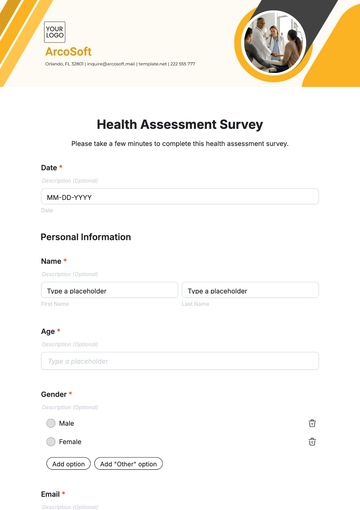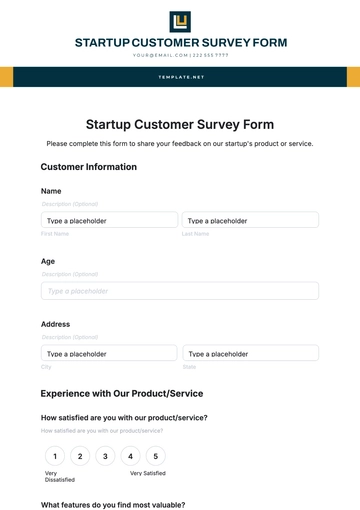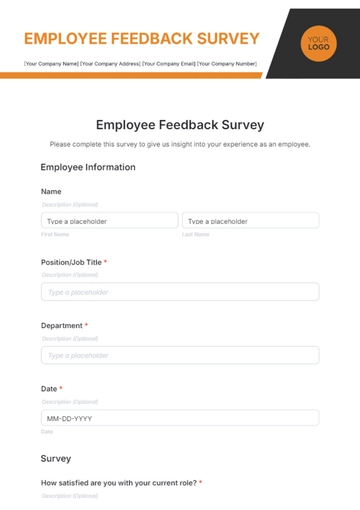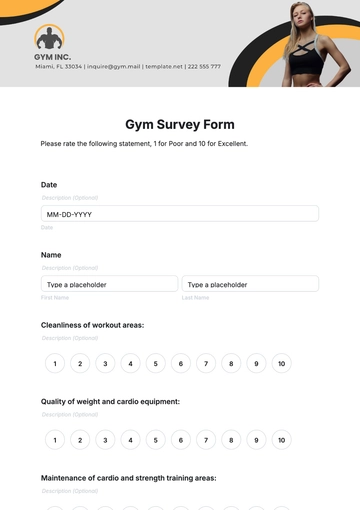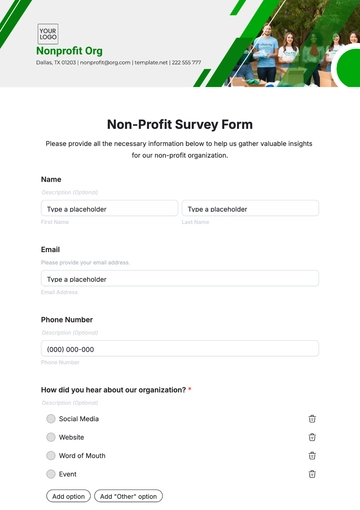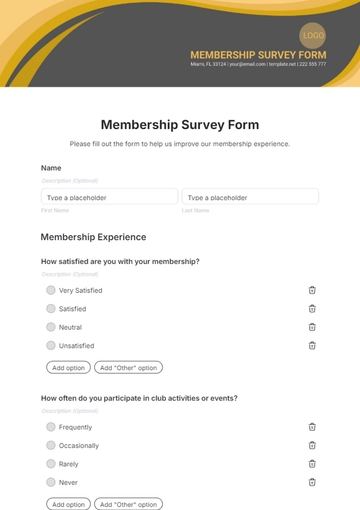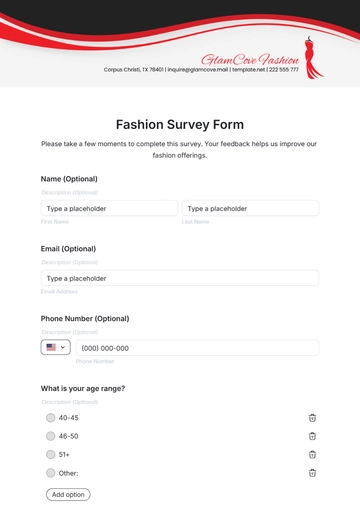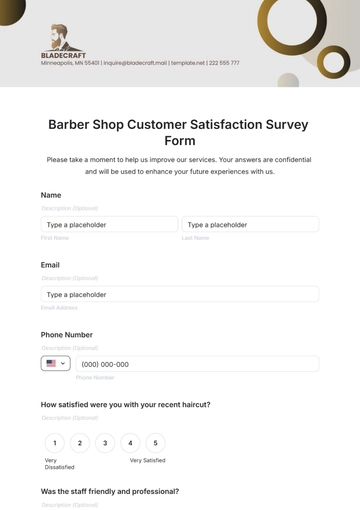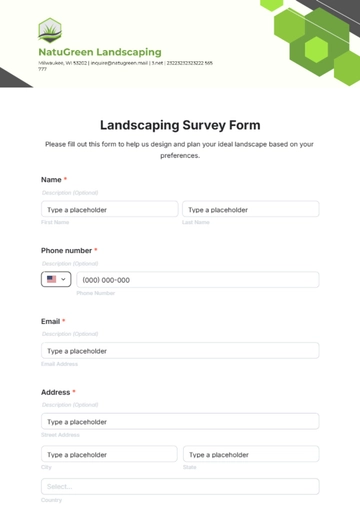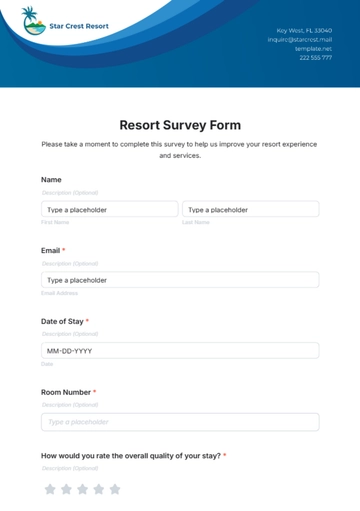SURVEY PROTOCOL
Name: | [YOUR NAME] |
|---|
Company: | [YOUR COMPANY NAME] |
|---|
Department: | [YOUR DEPARTMENT] |
|---|
Date: | [DATE] |
|---|
1. Introduction
This Survey Protocol serves as a structured framework for conducting surveys to gather specific information, data, or feedback. It outlines methods, procedures, and guidelines for effective survey administration, emphasizing ethical standards such as informed consent, data confidentiality, and legal compliance. Clear communication and transparency in survey procedures are prioritized to ensure the accuracy and reproducibility of results.
2. Objectives
Define Clear Objectives: The objectives of the survey are to be clearly defined to ensure alignment with the overall research goals. This includes identifying the specific research questions or hypotheses that the survey aims to address.
Specify Data Collection: Specify the type of information, data, or feedback to be gathered through the survey. This may include demographic information, opinions, preferences, behavior patterns, or other relevant data points.
Align with Research Goals: Ensure that the objectives of the survey align with the broader research goals and objectives of the study. This helps in determining the relevance and significance of the survey results in addressing research objectives.
Address Stakeholder Needs: Consider the needs and expectations of stakeholders or decision-makers who will utilize the survey results. Tailor the objectives to meet their informational needs and facilitate informed decision-making.
3. Survey Design
Methodology: Describes the chosen data collection method (e.g., questionnaire, interview) based on research needs.
Sampling: Specifies the sampling technique (probability or non-probability) and rationale for determining sample size.
Target Population: Clearly defines the characteristics of the population from which participants will be selected.
4. Survey Administration
Procedures for Survey Implementation:
The Survey Protocol provides detailed procedures for implementing the survey, including the timeline, recruitment of participants, distribution of surveys, and follow-up strategies.
Data Collection and Recording Instructions:
Clear instructions are outlined for data collection methods, ensuring consistency and accuracy. Guidelines for recording data, managing responses, and ensuring data integrity are also included.
Ethical Considerations and Participant Confidentiality:
Ethical guidelines are addressed, including obtaining informed consent from participants, protecting their confidentiality, and handling sensitive data responsibly. Measures to ensure participant anonymity and data security are also emphasized.
5. Data Analysis
Data Analysis Methods and Techniques: The Survey Protocol elucidates the methods and techniques to be used for data analysis, such as descriptive statistics, inferential statistics, thematic analysis, or qualitative coding. The rationale for selecting these methods is provided based on the nature of the data and research objectives.
Data Processing and Interpretation: It describes the process of organizing, cleaning, and transforming the collected data into a format suitable for analysis. Guidelines for interpreting the results and drawing meaningful conclusions are also included, ensuring accuracy and relevance.
Statistical Tools or Software: The Protocol specifies any statistical tools or software to be utilized for data analysis, such as SPSS, R, Excel, or specialized survey analysis software. It outlines how these tools will be used to perform analyses, generate visualizations, and present findings effectively.
6. Reporting
Format and Structure of the Survey Report: The Survey Protocol outlines the format and structure of the survey report, including sections such as executive summary, introduction, methodology, findings, analysis, conclusions, recommendations, and appendices. It specifies the order of these sections and any additional requirements for formatting and presentation.
Audience for the Survey Findings: The Protocol specifies the intended audience for the survey findings, which may include stakeholders, decision-makers, researchers, or the general public. It tailors the content and level of detail in the report to meet the informational needs and interests of the target audience.
Timeline for Report Submission: A timeline for report submission is included in the Protocol, detailing the deadline for completing data analysis, drafting the report, reviewing and editing, and submitting the final report. This ensures the timely dissemination of survey findings and adherence to a project timeline
7. Quality Assurance
Ensuring Survey Validity and Reliability:
The Survey Protocol includes measures to ensure the validity and reliability of survey results. This may involve pre-testing survey instruments, conducting pilot surveys, and using established scales or validated questions. Additionally, techniques such as inter-rater reliability and test-retest reliability may be employed to assess data consistency over time or among different raters.
Mitigating Potential Biases:
The Protocol addresses potential biases in survey responses, such as response bias, selection bias, and social desirability bias. Mitigation strategies may include randomization techniques, anonymizing responses, using clear and neutral language in survey questions, and implementing checks for data quality during data collection.
Reviewing and Validating Survey Results:
Steps for reviewing and validating survey results are outlined in the Protocol. This includes data cleaning procedures, conducting data checks for accuracy and completeness, performing statistical analyses to detect outliers or inconsistencies, and seeking input from subject matter experts or stakeholders to validate findings.
8. Conclusion
In conclusion, this Survey Protocol is a comprehensive guide designed to enhance the efficiency and accuracy of survey processes. Its systematic approach ensures the validity and reliability of survey data, facilitating informed decision-making. By adhering to this protocol, professionals can derive actionable insights and contribute to meaningful research outcomes.
Protocol Templates @ Template.net
